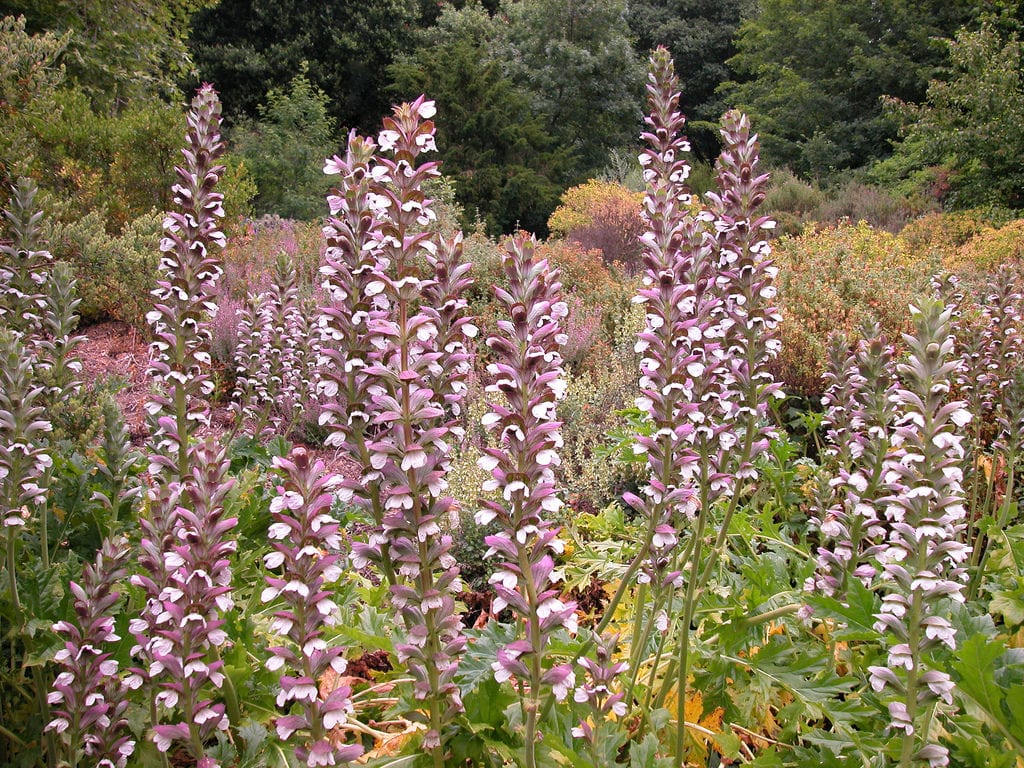
El acanthus It is one of those plants that you can find in the fields of Europe, specifically in the Mediterranean region. Due to its imposing and striking appearance, as well as the beauty of its flowers, it has become an ordinary herb, to form part of the design of gardens.
Would you like to know her better? Don't miss our special dedicated to this curious plant.
Acanthus characteristics
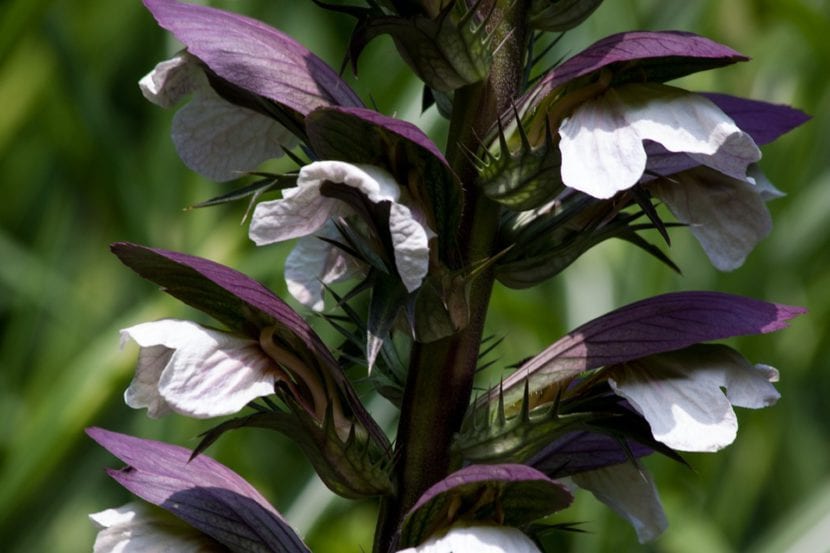
Acanthus is a plant that belongs to the botanical genus Acanthus. There are a total of 30 recognized species. Is about perennial herbs They measure up to 70cm in height, and whose leaves are truly spectacular, since they can measure up to a meter in length. These are dark green in color, ovate in shape and have a pointed end. The flowers appear distributed in cluster inflorescences up to 2m high, and are of various colors (white, green, pink, red or yellow). The fruit is an ovoid capsule up to 3cm in diameter, inside which are the seeds that measure 10mm.
Main species of acanthus
Although there are about thirty species, the main ones are:
acanthus mollis
It is the easiest acanthus to get. It is popularly known by the name of giant ear, since its leaves can measure up to 1m long. Its flowers bloom during the summer, often coinciding with the hottest days.
acanthus spinosus
This species has leaves that are incised up to the main vein, which makes it look very similar to thistle, since they also end in a point. Your blooming season starts in spring and ends towards summer.
Acanthus cultivation or care
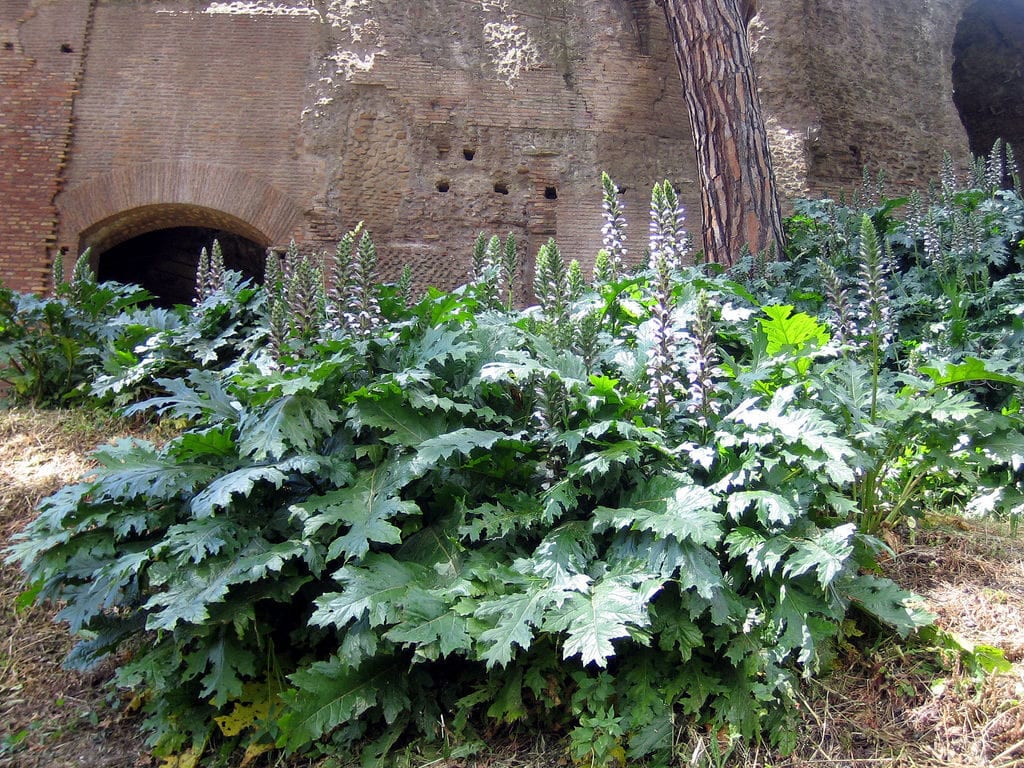
acanthus mollis
The acanthus is very easy to grow, as we will see below. It is very grateful and resistant. With a minimum of care, we will be able to have one specimen -or several- that will grow up healthy and strong.
Location
Place your acanthus in a very bright area, but protected from direct sun. It can also be put, for example, right between two trees, as it will have shade but it will not be completely dark. There are even those who have them in shady areas of the garden.
Irrigation
It needs frequent waterings, especially during the summer. You must prevent the earth from puddling, but otherwise, It is recommended to water 2-3 times a week during the hottest months, and between 1 or 2 every seven days the rest of the year. If the water is calcareous, you can use it without problem 😉, but if you prefer you can add a few drops of lemon or vinegar to lower the pH a bit.
Fertilizer
For a correct development, it is important to pay from spring to late summer with a liquid fertilizer that contains, in addition to the essential elements (nitrogen, phosphorus and potassium, or NPK), but also microelements (copper, manganese, iron, etc.).
A good way to make sure you get everything you need is use a subscription one month, and another month the next. For example, one month we use a universal mineral fertilizer, and the next we fertilize it with an extract of algae.
Transplant
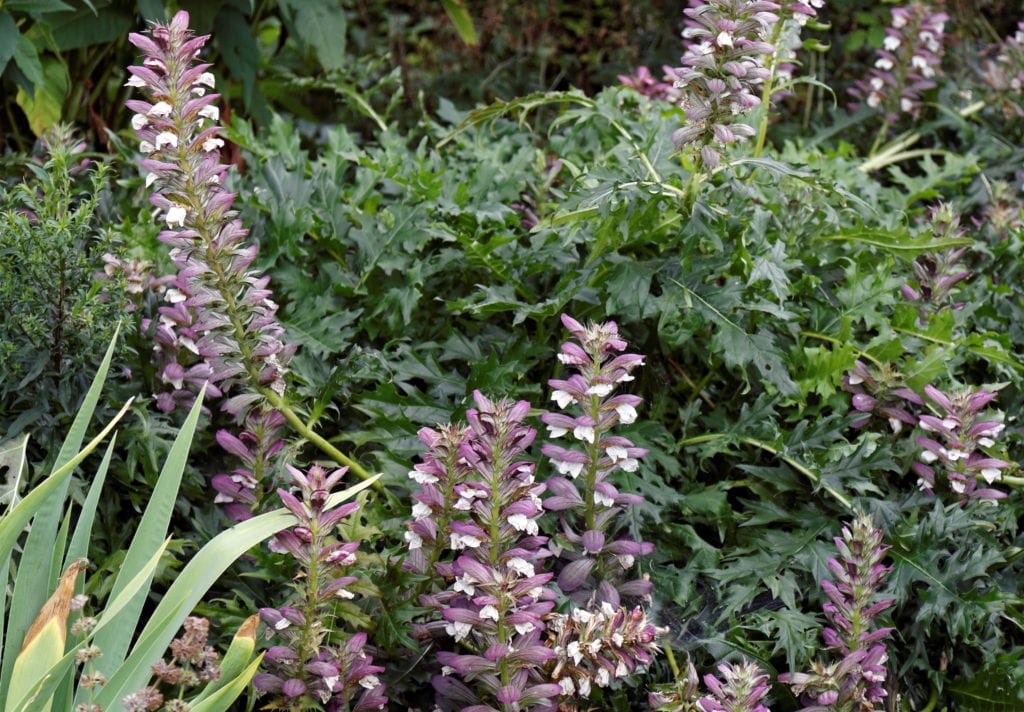
acanthus spinosus
The time to transplant the acanthus will be in spring, after the risk of frost has passed.
Pot transplant
The acanthus grows very fast, being essential transfer it to a pot about 4cm bigger every 1-2 years. You can also choose to plant it directly in a large 40cm pot.
In any case, we will use a substrate that has very good drainage, such as black peat mixed with perlite in equal parts, or universal substrate mixed with 30% perlite. If you can't get pearlite, you can put clay balls, volcanic clay, or river sand in it.
Ground transplant
If instead of having it in a pot you would like to put it on the ground, you just have to follow these steps:
- Make a planting hole 10cm wider and deeper than the height and diameter of the pot. For example, if it is in a 20cm diameter and 15cm deep hole, the hole will have to be at least 30 x 25cm.
- Pour a bucket of water so that the whole earth may be thoroughly soaked.
- Remove the plant from the pot, taking care that the roots do not break (if some fine ones do break, don't worry).
- Stick it into the hole. In case it has been very low, add a little soil, so that it is about 2-3cm below the ground level.
- Add more soil, to plug the hole.
- Make a tree grate around the plant with the remaining soil, 4cm high.
- Finally, waters.
Pruning
It does not need to be pruned. But it will be essential to cut the leaves that may have been damaged during the winter. To do this, it will simply be enough to take some scissors that we will disinfect with pharmacy alcohol, and we will cut them.
Rusticity
Supports up to -7ºC.
Acanthus reproduction
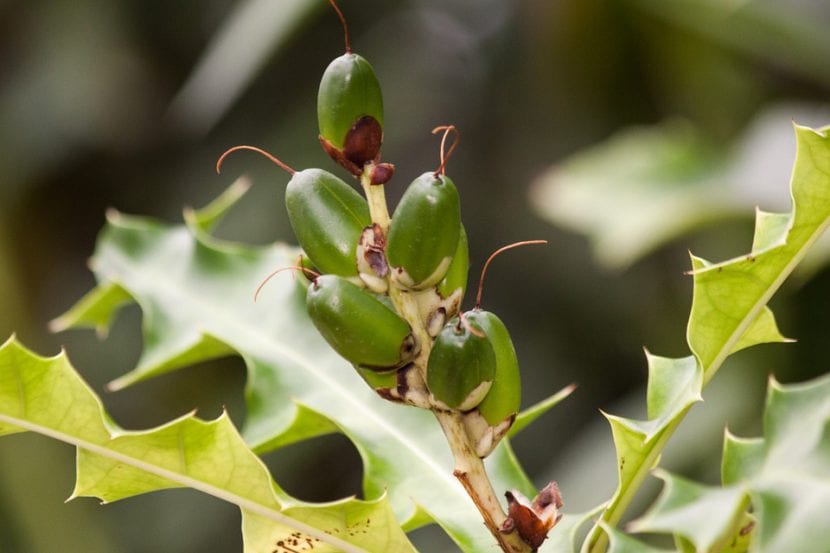
The acanthus reproduces by seeds or, much more commonly, by cutting. Proceed as follows:
By seeds
Once the fruits are ripe, which will occur in autumn, the seeds must be opened and extracted. They are then placed in a glass with water to hydrate them for 24 hours, and the next day they are sown in seedbeds avoiding putting more than 2 in each one.
After watering, they are placed in a location protected from direct sun, and wait 🙂. The first can wake up last 1 month, but the more lazy ones may take a little longer. It is important to keep the substrate moist; thus, the seedlings will have the best start.
By cuttings
The reproduction of the acanthus by cuttings is carried out in spring. It is a very fast and efficient method that will allow you to have more copies without spending money. To do this, follow these steps:
- Cut a 15cm branch in length making an oblique cut with a knife without a saw.
- Fill a pot with black peat mixed with perlite, or with compost.
- Impregnate the base of the cutting with liquid rooting hormones.
- Make a hole with a wooden stick, and introduce the cutting.
- Water, so that the substrate is soaked.
- Put 4 sticks on different sides of the pot, and cover it with a plastic.
The cutting will begin to sprout in a time of 2-3 weeks, at a temperature of 25ºC, keeping the substrate slightly humid.
Acanthus pests and diseases
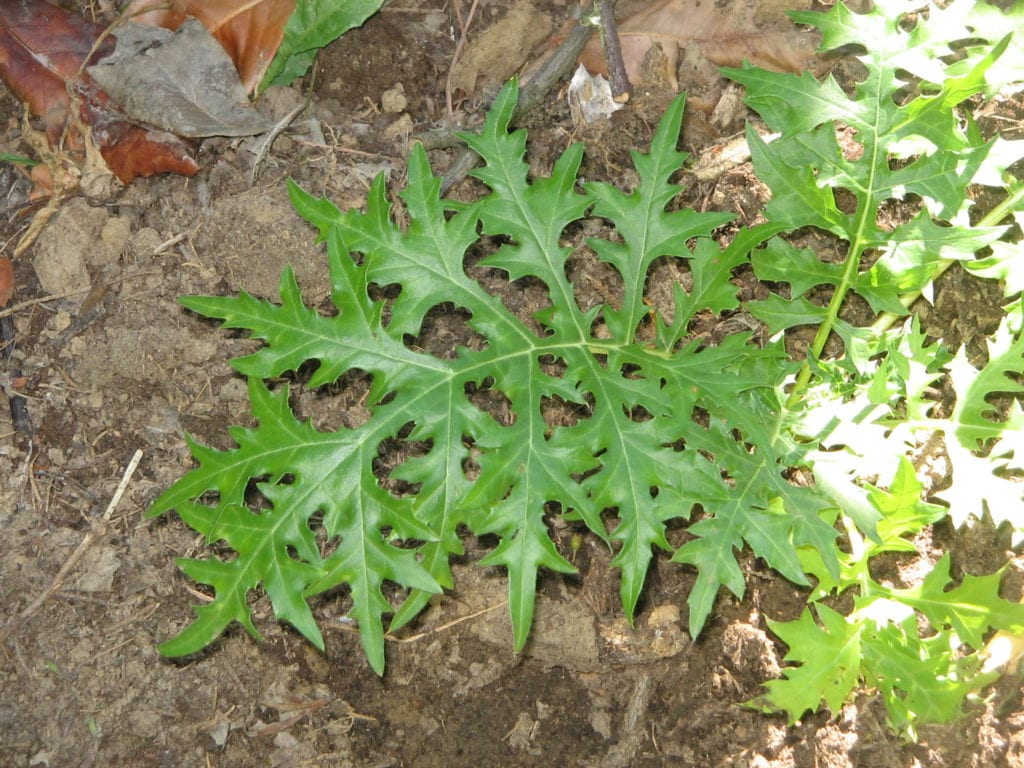
The most frequent problem of the acanthus is the fungus powdery mildew. It affects all parts of the plant, covering it with white "dust". Unfortunately, there is no effective curative treatment, so it is necessary to resort to cutting the damaged parts, and treating with a systemic fungicide following the indications specified on the package.
The snails and slugs They can also do a lot of damage in the rainy season. To avoid this, it is advisable to protect the plant with a mesh, or to use natural molluscicides.
Acanthus uses
This plant is used above all to decorate gardens, but did you know that it can also be used as a medicinal? In fact, the leaves of one of the species, specifically the acanthus mollis, are used as laxative y to stimulate the appetite; and its roots for the Diarrhea and dysentery.
Acanthus curiosities
There is a legend that says that Calimaco, Greek artist and poet who lived between the XNUMXth and XNUMXrd centuries BC. C., when he saw a copy of acanthus mollis At a lady's grave, he thought of give the stylized plant shape to the Corinthian capitals.
Acanthus is a very resistant and very beautiful plant, don't you think? 🙂